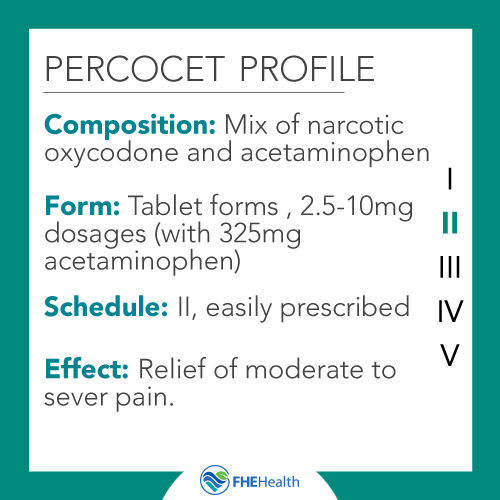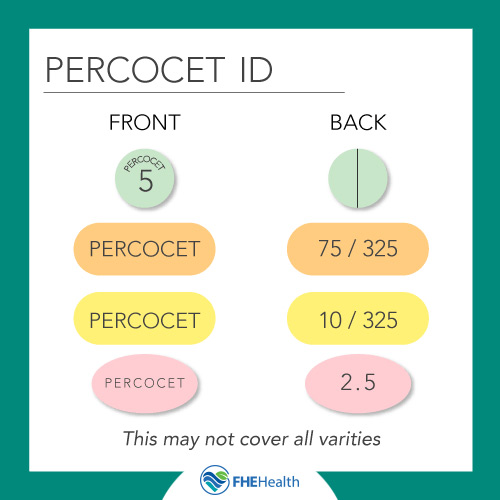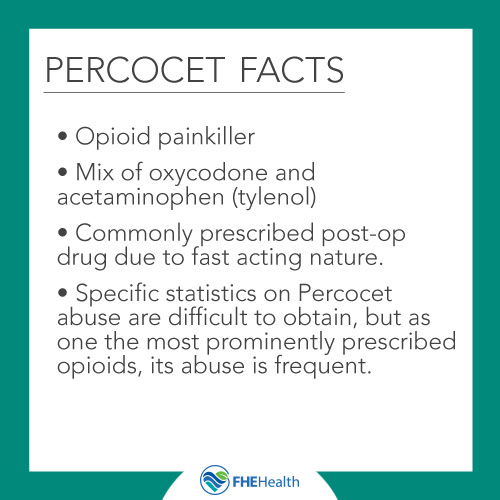
The United States is currently in a third wave of an opioid overdose epidemic. Opioids are a family of manufactured drugs that are chemically similar to opiates derived from the opium poppy plant. Many opioids have medicinal uses for the relief of acute and chronic pain, including the drug Percocet. So, what’s perc, and why is it abused?
Used for treating moderate to severe pain, Percocet or “Perc” is a Schedule II prescription drug that contains the opioid oxycodone and acetaminophen, an analgesic drug. Unfortunately, overuse or abuse of Percocet and other opioid-based prescription pain medications may lead to drug dependence and addiction. CDC data shows that in 2022, the abuse of prescription opioids resulted in 6,416 drug overdose deaths in the United States.
Here’s everything you need to know about Percocet, including how it works and why people may get addicted to prescription opioids.

What Are Percs?
Percs are narcotics. Percocet is the brand name for the medication that contains the narcotic oxycodone mixed with acetaminophen. It’s a powerful pain reliever. Generic alternatives exist, although they’re often referred to as Percocet as well.
The drug falls into the opioid category of drugs that includes heroin, morphine, fentanyl, and others. More specifically, Percocet belongs to a class of similar pain relievers with Vicodin, OxyContin, Codeine, and others labeled as prescription opioids.
While opioids such as Percocet aren’t as powerful as morphine and fentanyl, they share a Schedule II classification under the Controlled Substances Act. In the past, perc and its alternatives weren’t heavily regulated, and prescriptions were relatively easy to obtain. However, in 2018, the FDA imposed stricter requirements for such prescriptions, including that an opioid analgesic Risk Evaluation and Mitigation Strategy (REMS) should be applied before a physician prescribes these drugs.
How Does Percocet Work?
Percocet was developed primarily as an effective painkiller, particularly for people and situations where non-opioid painkillers aren’t indicated or don’t work. Like other drugs of the same family, Percocet binds to opioid receptors in the brain, suppressing the body’s feelings of pain and also prompting the release of the hormone dopamine. Dopamine is a feel-good hormone that regulates the pleasure response in the body.
When used correctly for acute and chronic pain, and with careful medical observation, Percocet is effective as a painkiller and not necessarily habit-forming. But when a person uses Percocet to boost feelings of pleasure, especially in the absence of pain, the brain reduces the amount of dopamine it releases. To get the same high, it’s necessary to take increased doses of the drug. This is when dependence begins to set in and is eventually followed by full-blown addiction.








